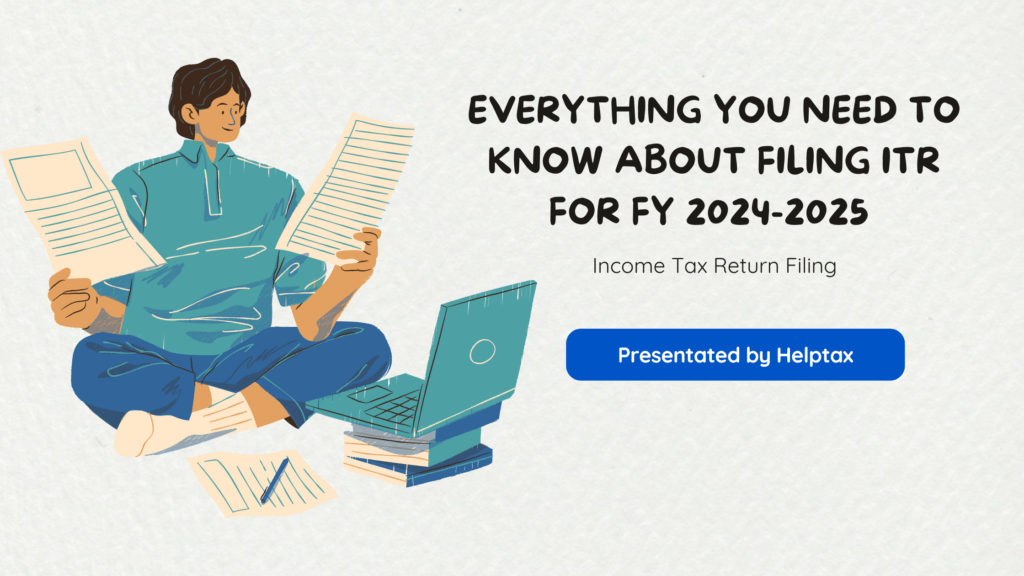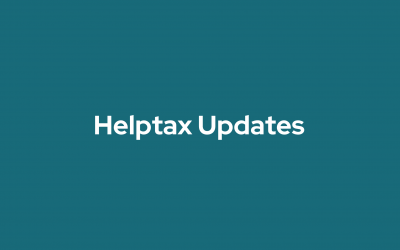Everything You Need to Know About Filing ITR for FY 24-25
As the financial year 2024-25 progresses, understanding the process of Income Tax Return FY 2024-25 (ITR) filing becomes crucial for every taxpayer in India. Filing your ITR on time and accurately not only ensures compliance with tax regulations but also unlocks various financial benefits. This comprehensive guide will walk you through everything you need to know about ITR filing for FY 24-25 (Assessment Year 2025-26), from understanding the basics to navigating the filing process seamlessly.
Understanding the Fundamentals of ITR Filing for FY 24-25
- What is Income Tax Return (ITR)? Briefly explain that it’s a form taxpayers use to submit information about their income, deductions, and taxes to the Income Tax Department.
- Who is Required to File ITR? List the categories of individuals and entities obligated to file Income Tax Return FY 2024-25 based on income thresholds and other criteria. (e.g., individuals with income above the basic exemption limit, companies, firms, etc.)
- Assessment Year vs. Financial Year: Clearly differentiate between FY 2024-25 (the income-earning period) and AY 2025-26 (the year for filing returns).
What’s New in ITR Filing for FY 24-25? Key Changes and Updates
- Once the Income Tax Department announces specific changes or new forms for FY 24-25, this section will be crucial. Include information about any new rules, form updates, or procedural changes.
- Continuance of Existing Rules: Briefly mention any significant rules or options that are likely to continue (e.g., the new tax regime vs. the old tax regime).
Essential Documents: Your Checklist for ITR Filing (FY 24-25)
List all the necessary documents taxpayers will need to gather before starting the filing process. Examples include:
- PAN Card
- Aadhaar Card
- Form 16 (for salaried individuals)
- Bank statements
- Investment proofs (for deductions like Section 80C, etc.)
- Capital gains statements (if applicable)
- Details of other income (e.g., rent, interest)
Different Types of ITR Forms
Briefly explain the different ITR forms and who is eligible to use each:
- ITR-1 (Sahaj): For resident individuals with total income up to ₹50 lakh from salary, one house property, other sources (interest, etc.), and agricultural income up to ₹5,000.
- ITR-2: For individuals and HUFs not having income from business or profession and also not eligible for ITR-1.
- ITR-3: For individuals and HUFs having income from business or profession.
- ITR-4 (Sugam): For resident individuals, HUFs, and firms (other than LLPs) having total income up to ₹50 lakh from business and profession which is computed on a presumptive basis.
- ITR-5: For persons other than individuals, HUFs, companies, and persons filing ITR-7.
- ITR-6: For companies not claiming exemption under section 11.
- ITR-7: For persons including companies required to furnish returns under sections 139(4A), 139(4B), 139(4C), 139(4D), 139(4E), or 139(4F)
Step-by-Step Guide to Filing ITR Online
Provide a clear, numbered guide on how to file ITR online through the Income Tax Department’s e-filing portal:
- Visit the official Income Tax e-filing portal. https://www.incometax.gov.in/iec/foportal/
- Register/Login: Guide new users on registration and existing users on logging in.
- Download the relevant ITR form: Explain how to choose and download the correct form.
- Fill in the details: Emphasize accuracy while entering personal, income, and deduction details.
- Verify the information: Highlight the importance of reviewing all entries.
- Calculate your tax liability: Explain how the portal assists with tax calculation.
- Pay taxes (if applicable): Guide through online tax payment methods.
- Submit your ITR: Explain the final submission process.
- e-Verify your return: Detail the various methods for e-verification (Aadhaar OTP, Net Banking, etc.) and its importance.
Important Dates and Deadlines for ITR FY 24-25
- Once the official deadlines for ITR filing for FY 24-25 are announced, clearly state them for different categories of taxpayers (e.g., individuals without business income, those with business income, etc.).
Now its 31st of Jul 2025 - Consequences of Late Filing: Explain the penalties and interest applicable for filing ITR after the due date.
Tips for a Smooth ITR Filing Experience
- Gather all documents in advance.
- Ensure the accuracy of your information.
- Choose the correct ITR form.
- File before the deadline to avoid penalties.
- e-Verify your return promptly.
- Keep a record of your filed ITR.
- Seek professional help if needed.
(Conclusion)
That’s all Everything You Need to Know About Filing ITR for FY 24-25, Filing your Income Tax Return for FY 24-25 doesn’t have to be a daunting task. By understanding the process, gathering the necessary documents, and adhering to the deadlines, you can ensure a smooth and compliant filing experience. Stay informed about the latest updates from the Income Tax Department and take proactive steps to file your ITR accurately and on time.

